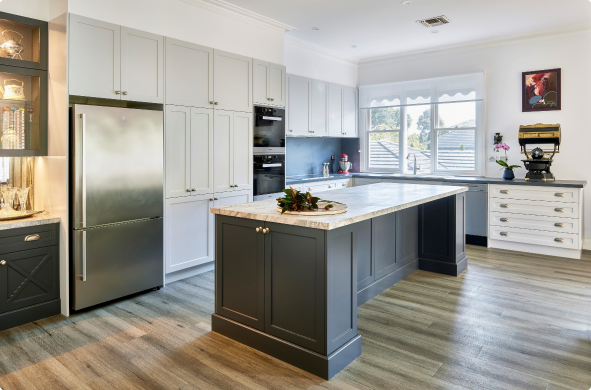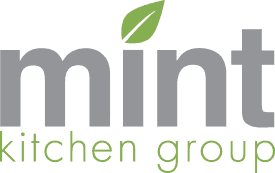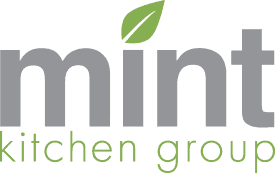What is a Splashback?
If you’re building or renovating, a splashback is a kitchen essential. But what is a splashback and how can you choose the best one? A splashback protects your walls from moisture, spills, heat and grease and is available in a variety of materials and finishes.
Read on to learn about all things splashbacks.
Key Summary
What is a kitchen splashback? A splashback is a protective wall panel installed in the kitchen, laundry or bathroom. Today there are many choices of materials, designs and price points available to suit your needs.

What is a Splashback?
A splashback protects the walls in your home from cooking, food, water and other splashes. It is a hard material that covers the walls, and commonly found in kitchens and laundries.
The best splashbacks are:
- Fit for purpose
- Easy to clean
- Durable
- And stylish!
Types of Splashbacks
There are many types of splashback material that suit all tastes and budgets. They include:
Glass
Toughened and heat resistant glass that meets Australian safety regulations can be used as a splashback. Available in all shades and can also have custom designs digitally printed onto the glass.
Tile
Traditionally the most common type of splashback. Available in countless styles and designs and can be configured in a range of patterns or layouts.
Stainless Steel
Originally the hallmark of commercial kitchens and available in various thicknesses. Can be installed directly onto plasterboard or tiles.
Acrylic
A rigid plastic compound material with high transparency. Available in long sheets or panels and almost any colours – including those to match interior paint palettes. Lightweight material which light can pass through.
Stone
Common types include granite, limestone, quartz and Corian (composite minerals). You can also get porcelain, a high-density ceramic. Some types will be engineered to include other materials other will be natural stone.
Comparing Types of Splashback: What’s the Difference?
Glass
High range price point especially custom sizes and designs. Damage can be difficult to fix and may require complete replacement. As they reflect light, compact kitchens with glass splashbacks appear more spacious and feature in modern kitchens.
All in one, smooth panel is easy to clean and stain-resistant. Can be scratched by things such as knives. Careful installation is required.
Tile
A popular choice, with a wide variety and the most common in Australian homes. In small mosaic designs, cleaning can take longer due to more grout showing.
Typically cost-effective and can even be DIY. Straightforward installation and you can replace individual tiles if damage occurs. Budget friendly, depending on labour and very durable.
Stainless Steel
One of the most durable for intense heat, easy to clean and hygienic. Today, stainless steel splashback is available in more custom shapes, designs and finishes, like brushed-look.
Unlike many glass, tile and composite options, stainless steel is fully recyclable. Higher price point especially for custom sizes and reflective surface shows up smudges and marks.
Stone
Strong and greatly durable. A stone splashback is high performance and resistant to water, heat and scratches.
Will need to be sealed, but once done are very easy to clean the smooth surface with a mild cleaning agent. Can involve intricate installation and command a luxury, high-end price point.
Acrylic
Low to mid-range price point, and easier to cut to size. Durable, wide colour choice and smooth cleaning.
A similar look to glass, without the price point, but can be scratched. Not great with heat so will require other compensation if installed near a stove for proper protection.
How are Splashback used in Kitchen Renovations?
Stove
Splashbacks can be exclusively installed behind the stove for protection from cooking.
Wet areas
You can also install a splashback to protect around sinks and washing areas. Sometimes this is done for design purposes or to protect other areas that might get splashed or wet, or both!
Walls
For an easy clean kitchen that can’t be beaten, you can install a splashback on an entire section or multiple walls. Typically this would be done in tiles, but other materials could suffice.
What Are the Advantages of Having a Splashback?
There are many advantages to installing a kitchen splashback, including:
Design
Installing a new splashback to an old kitchen wall can transform the entire space. It can be a bold or subtle feature depending on the style you choose.
Choice
There are many types of splashbacks to suit all budgets, in a range of colours.
Function
Splashbacks protect the walls of the kitchen, laundry and bathroom. They prevent mould, moisture and heat from damaging structural foundations of your home.
Speak to the Kitchen Renovation Experts
Having trouble deciding which splashback to choose for your kitchen design? Contact our friendly team for advice and assistance.
Find out more about Mint kitchen renovations
References:
- Build, Types of Splashbacks, https://build.com.au/types-splashbacks
- Dan Kitchens, What is the Best Splashback Material for a Luxury Kitchen? https://dankitchens.com.au/what-is-the-best-splashback-material-for-a-luxury-kitchen/
- Handmade Kitchens, What is a Splashback? https://www.handmadekitchens.co.uk/blog/glossary/what-is-a-splashback/
- HiPages, Get the Look: Acrylic Splashbacks, https://hipages.com.au/article/get_the_look_acrylic_splashbacks
- Metcon Steel, Splashbacks for Commercial Kitchens: Why Stainless Steel is the Best Choice, https://metconsteel.com.au/splashbacks-for-commercial-kitchens-why-stainless-steel-is-the-best-choice/
Splashback Regulations, iBuild, https://build.com.au/splashback-regulations







